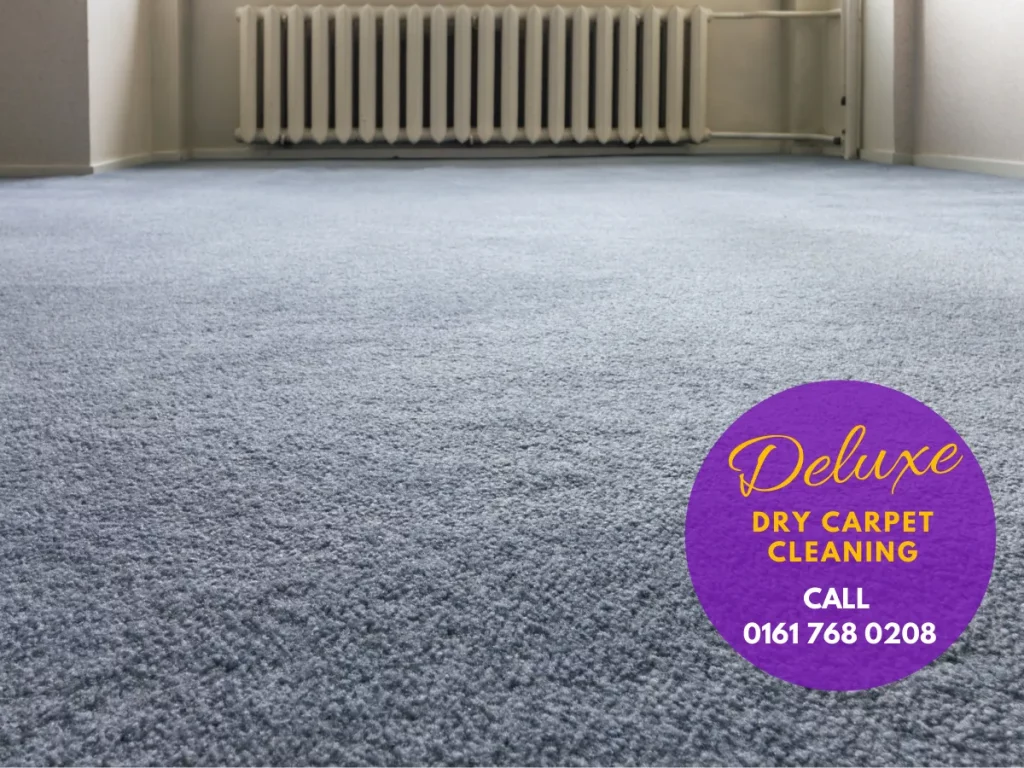What Are Carpet Moths? What To Do If You Have Them

Carpet Moths and Their Destructive Nature
Carpet moths are small, winged insects that belong to the Tineidae family. If you spot them on your carpet it is time to call in professional help from a carpet cleaning service. The moths will not attack or destroy anything that is made of synthetic fibre, but they can cause significant damage to natural fibre materials, particularly wool, silk, and fur. The larvae that hatch from the eggs will eat wool or silk carpets, rugs, upholstered furniture, and clothing made from wool or animal-based fabrics and leave behind unsightly holes and bare patches.
Identifying Carpet Moth Infestation: Signs to Look Out For in Your Home
Early detection is necessary to prevent extensive damage from a carpet moth infestation. Here are some telltale signs to watch out for:
Signs of Moth Larvae
Look for small, white, or cream-coloured caterpillar-like creatures crawling on your carpets or furniture. These are the larvae of carpet moths, and their presence is a clear indication of an infestation.
Carpet Moth Eggs
Carpet moth eggs are tiny, oval-shaped, and can be found in crevices, seams, or along the edges of carpets and furniture. They may appear as small, pale specks.
Wool Eating Moths
You may notice adult carpet moths fluttering around your home, especially near wool-based items. These moths are attracted to natural fibres and can lay their eggs on suitable woolen materials – this can be carpets, wool sofas or clothing.
Carpet Holes from Moths
One of the most obvious signs of a carpet moth infestation is the appearance of irregular holes or bare patches in your carpets, rugs, or upholstered furniture. These holes are caused by the larvae feeding on the fibres.
Preventing Carpet Moth Infestation and Protecting Your Carpets
Preventing a carpet moth infestation is easier than dealing with one. Here are some effective methods to consider:Moth Prevention Tips
- Vacuum regularly, paying special attention to corners, edges, and hard-to-reach areas where moths and larvae may hide.
- Use natural moth repellents, such as cedar chips, lavender, or cloves, in areas where you store wool items.
- Opt for professional dry carpet cleaning for carpets and rugs on a regular basis to remove any potential food sources for moths.
- Rotate furniture frequently to expose areas that may have been undisturbed for long periods, preventing moths from establishing a breeding ground.
- Avoid leaving wool carpets undisturbed for extended periods, especially in dark areas under beds or sideboards where moths can thrive undisturbed.
Carpet Protection Methods Against Moths
- Consider using moth-resistant carpet fibres, such as nylon or polyester, which are less attractive to carpet moths.
- Store wool items in airtight containers or vacuum-sealed bags when not in use to prevent moth infestations.
- Inspect second-hand furniture or carpets for signs of moth activity before bringing them into your home.
Tackling a Carpet Moth Infestation: Step-by-Step Guide to Getting Rid of Them Effectively
If you suspect a carpet moth infestation, taking prompt action is crucial to minimize further damage. Here’s a step-by-step guide to help you tackle the problem:
Carpet Moth Treatment
- Thoroughly vacuum the affected areas, including carpets, upholstered furniture, and baseboards, to remove any visible larvae, eggs, or adult moths.
- Get a professional carpet cleaning company to deep clean carpets and upholstery,this will remove eggs, larvae and moths
- .Ask the carpet cleaning company to use insecticide sprays or powders specifically formulated for carpet moth control.
Removing Carpet Moths Naturally
For a more natural approach, you can try the following methods but they are not always effective:
- Sprinkle diatomaceous earth or boric acid in affected areas, as these substances can dehydrate and kill moth larvae.
- Use essential oils like peppermint, clove, or eucalyptus oil, which have insect-repelling properties.
- Place moth traps or pheromone lures to monitor and capture adult moths.
Professional Pest Control for Moths
In cases of severe or persistent infestations, it may be necessary to seek professional services from your carpet cleaning company. Experienced professionals have access to stronger insecticides and can implement comprehensive treatment plans to effectively eliminate carpet moths from your home.
Keeping Your Home Carpet-Moth Free: Long-Term Strategies and Maintenance Tips
To maintain a carpet-moth-free environment and prevent future infestations, consider implementing the following long-term strategies and maintenance tips:
Carpet Maintenance Tips
- Vacuum regularly, including under furniture and in hard-to-reach areas.
- Rotate and rearrange furniture periodically to expose undisturbed areas.
- Schedule regular professional dry carpet cleaning to remove any potential food sources for moths.
How to Prevent Future Moth Infestations in Carpets
- Store wool items properly in airtight containers or vacuum-sealed bags when not in use.
- Inspect second-hand items for signs of moth activity before bringing them into your home.
- Use moth traps or pheromone lures to monitor for any potential infestations.
- Consider replacing wool carpets or upholstery with synthetic materials if infestations persist.
Regular Professional Dry Carpet Cleaning
Investing in regular professional dry carpet cleaning services can help eliminate moth larvae, eggs, and potential food sources, making your home less inviting for carpet moths. Professional cleaners have access to specialized equipment and cleaning solutions that can effectively remove deeply embedded debris and allergens, creating an inhospitable environment for pests like carpet moths.
Take Action Against Carpet Moths Today for a Healthy and Pest-Free Home Environment!
Carpet moths can cause significant damage to your valuable carpets, rugs, and upholstered furniture if left unchecked. By recognizing the signs of an infestation early on and taking proactive measures, you can protect your home from these destructive pests. Implement prevention strategies, address any existing infestations promptly, and maintain a regular cleaning and monitoring routine to ensure a healthy and pest-free home environment. Get professional help if the infestation proves challenging to overcome on your own.
